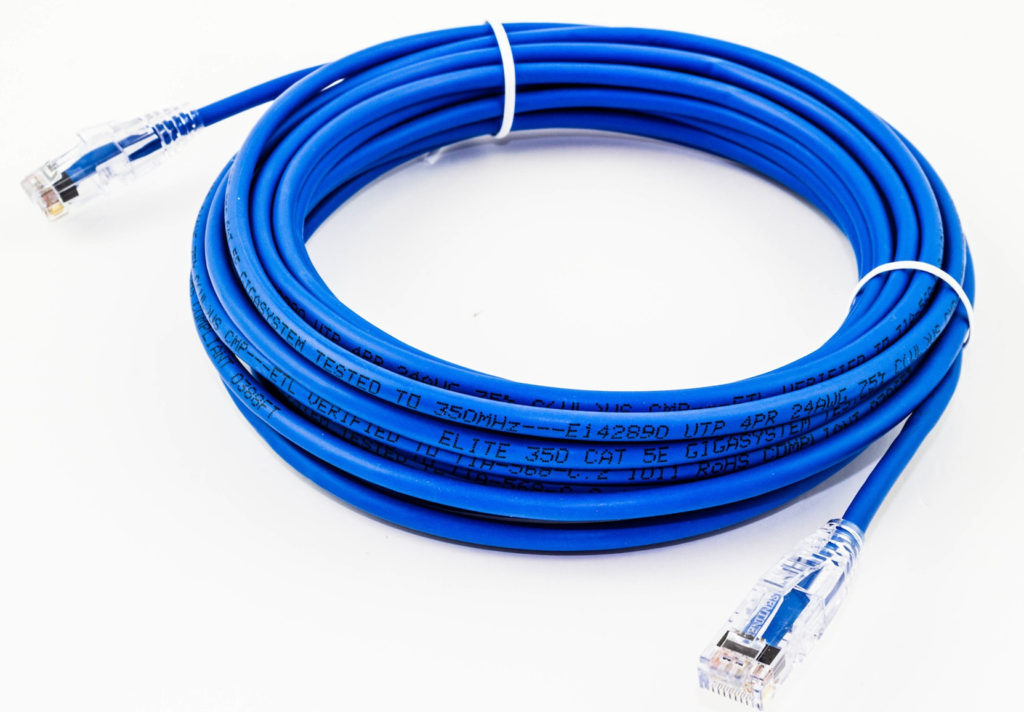As the data speeds increase from Fast Ethernet to Gigabit Ethernet, cables for the network connection are also required to be improved. Cat6 and Cat6a are two kinds of copper cables for Gigabit Ethernet. “A” is short for “augmented”. Cat6a is an enhanced Cat6 cable. Cat6 vs Cat6a, Do you know which one to use? Could these two categories replace each other? Now this article will tell some of their differences from several sides.

Cat6 vs Cat6a Appearance
It’s not difficult to identify Cat6 and Cat6a cables from appearance. If you look at the jacket carefully, you will find the identifiers printed as Cat6 and Cat6a. You can also distinguish these two cables from thickness. Cat6a cables are much thicker than Cat6 cables.
Cat6 vs Cat6a Shielding
Copper cables have shielded twisted pair (STP) and unshielded twisted pair (UTP). STP cable means there is one or more additional jackets surrounding the inner twisted wire pairs for insulation. The shielding is beneficial for protecting cable from electromagnetic interference (EMI). (For more information about STP vs. UTP difference, you can refer to my blog “STP vs. UTP, Which One Is Better?” .) Cat6 and Cat6a cables also include these two types. Though shielded Cat6 cables are available in the market, unshielded versions are easier to get. On the contrary, shielded Cat6a cables are more common.
Cat6 vs Cat6a Transmission Distance
Cat6 cable can support the transmission distance up to 100 metres at the data rate of 10, 100, 1000 Mbps. But it can support only 55 metres at the speed of 10 Gbps when crosstalk is in an ideal situation. What’s worse, the transmission distance can only reach 33 metres when the crosstalk is high. So the lengths of Cat6 cables are influenced by the network speed and crosstalk conditions. While Cat6a cables can support the distance over 100 metres at the speed of 10 Gbps.
Cat6 vs Cat6a Cost
Take Fiberstore as an example, the average cost of 1m Cat6 cable is about 1.00 US$ and more than 3.00 US$ for 1m Cat6a cable (cables maybe more expensive on other sites.). The more cables you purchase, the bigger the price difference will be. And the price difference is not only caused by the cable. Other matched connection components should also be considered.
Cat6 vs Cat6a Durability
As mentioned above, Cat6a cable is thicker and heavier than Cat6 cable. Cable trays can not hold as many Cat6a cables as Cat6 cables. When laying cables on the trays, you should better not bend cables too much as this can damage the wiring and influence network performance. The minimum radius that a cable can be bent without damaging is called the bend radius. The lower the bend radius, the more you can bend the cable. As Cat6a cable is bulkier than Cat6, Cat6a cable has a larger bend radius than Cat6 cable.
Cat6 vs Cat6a, Which One Should You Buy?
Although Cat5e cable can meet the current needs in your home or office, higher bandwidth will be required in the near future. So you should upgrade your network with Cat6 or Cat6a cables which can provide greater bandwidth. At that time, you need to figure out which one to buy. If you install cables in a small room or business offices where cables might get close to one another, then Cat6a is better than Cat6 due to the alien crosstalk. Cat6 cables especially the unshielded cables, are much more prone to alien crosstalk than Cat6a, which uses superior insulation to protect its wiring.
Summary
From this article, you can make a clear identification of Cat6 and Cat6a cables. When you plan to purchase cables, you need to consider their differences like shielding, transmission distance, cost, durability, etc. Hope you can choose the suitable cable and build a high performance network.
Related Articles
Cat6a Shielded vs. Unshielded: Which Is Better?
Quick View of Ethernet Cables Cat5, Cat5e And Cat6




